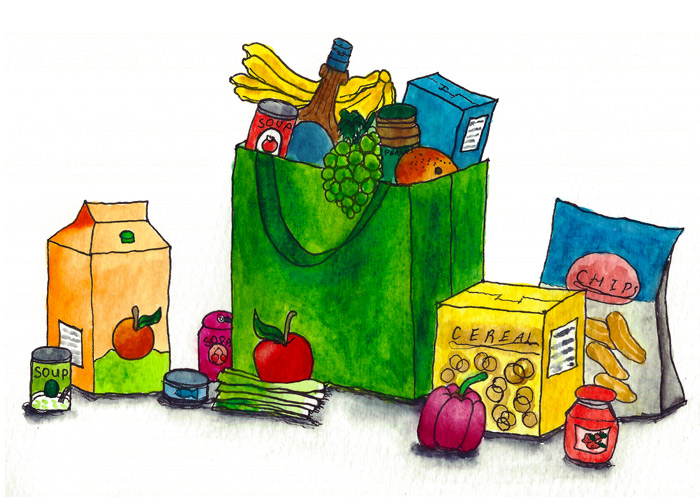One of the many necessities of transitioning from adolescence to adulthood is learning how to budget. This is something that I’ve always struggled with: Most recently, for three consecutive weeks, I bought lunch on campus every day despite having food at home that I’d simply forgotten to pack. Now that I’m in my fourth year of university—and will soon be entering the wild world of post-grad financial independence—I’m attempting to adopt a thriftier lifestyle; cutting these frequent take-out foods is a step in this direction. So, this September, I set a goal for myself: Spend $40 on groceries, and make the food last for two weeks.
I’m privileged to admit that I’ve never had trouble getting food on the table. Plenty of people are limited to strict grocery budgets like this one on a regular basis—I’m fortunate that this was a unique experience for me, and one that I chose to embark on, rather than having to out of economic necessity. Ultimately, I walked away from the experience with more than groceries; I learned a lot about budgeting that I plan to take with me after graduation.
I found that the key to cutting costs during market visits was to purchase non-perishables; these items can last for weeks on end and are relatively cheap compared to fresh foods. My non-perishables took up a lot of space in my shopping cart: I bought rice, a 12-pack box of oatmeal, peanut butter, frozen vegetables, and black beans. The remaining space in my cart was left for a dozen eggs, frozen spinach, three apples, five bananas, a pack of English muffins, and the cheapest chicken I could find. It was difficult to purchase any fresh vegetables because they certainly would not survive two weeks worth of rationing, and unfortunately, my Häagan Daaz addiction took a full stop because of their extremely high pint prices. Limiting my normal grocery expenditure would not have been feasible without pre-planning what to buy—and sticking to it—at the store. All in all, my grocery bill came to a total of $35.24, which gave me room to buy a second pack of English muffins and three more apples in the second week. The grand total amounted to $41.19—only slightly over budget.
Once I bought all of my groceries, the next step was to meal plan and prep. For the duration of the two weeks, I planned to eat either eggs or oatmeal for breakfast every day, a toasted English muffin with peanut butter and fruit for lunch, and some variation of rice, beans, vegetables, and chicken for dinner. In order to save time and energy in the evenings, I pre-cooked all of my rice, chicken, and beans. This way, I was able to ration out my food over the course of a week, while also saving myself from eating a jar of peanut butter if I got too lazy to cook.
To be honest, there was not much variation in my meals, but I knew I couldn’t be too picky when it came to breakfast and lunch. However, eating basically the same dinner each night definitely got boring, so I tried to create different meals from the same ingredients: Fried rice for one night, baked chicken for another, and rice and beans for the remaining evenings. Yes, my dinner options were limited, but I learned that eating while on a tight budget was not going to give me much creative cooking freedom.
I managed to get through these two weeks with relative success, so I tried another two weeks after that, and this time, my roommate tried it with me. We decided to share groceries, and this was a game-changer. Splitting groceries—and costs—allowed for plenty more options. We split the bill for non-perishable foods and were then able to add hummus, crackers, carrots, peas, butternut squash, and sour cream to the mix. Now, we had mid-day snacks, and even got to make vegetable soups with dollops of sour cream; it was practically heaven after the bland first two weeks, yet still within our budgets.
Though it was tough to get used to at first, buying groceries on a $40 bi-weekly budget became easier with time. If there are three lessons to take from this, it’s that non-perishables are crucial for reducing costs, meal prepping helps you get through the week, and sharing groceries and meals allows for a larger variety of food options. Whether big or small, accomplishing a goal takes discipline, commitment, and in my case, a bag of rice.








